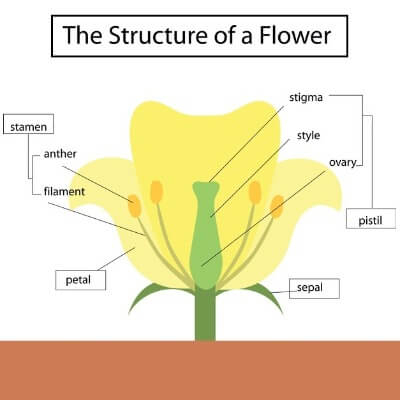
This web page contains information on the parts of a flower for kids and is an excellent resource for anyone looking to learn about flower parts. Our goal is to provide you with accurate, up to date facts about flower parts. In addition to explaining the parts of a flower, we provide pictures of those parts and additional resources on flowers.
The facts below will help you learn about the different parts of a flower, how flowers use each of their parts, why some flowers have different parts than others and other flower facts. We hope these facts are useful and help you better understand the different parts of a flower.
If any of the below flower part facts are inaccurate, please contact us and let us know.
21 Facts about the Parts of a Flower for Kids
- A flower is the male and female reproductive part of a flowering plant.
- The pistil part of the flower is the female reproductive organs.
- The stamen part of the flower is the male reproductive organs.
- There are several parts that make up a flower.
- The main parts of a flower are the stem, sepal, petals, pistil and stamen.
- The stem of a flower provides support and transports nutrients.
- The sepal of a flower protects the bud prior to blooming and then supports the petals after it blooms.
- The petals of a flower are designed to attract pollinators, like bees. Flower petals attract certain types of pollinators by their scent, color, shape and size.
- The pistil of a flower contains the stigma, style, ovary and ovule. The pistil is what develops into seeds or a fruit after a flower has been pollinated.
- The stigma in the pistil of a flower receives pollen from pollinators and is used for fertilization.
- The style in the pistil of a flower is a tube to transport pollen from the stigma to reach the ovary.
- The ovary in the pistil of a flower is where unfertilized eggs are combined with pollen to fertilize them.
- The ovule in the pistil of a flower is where seeds develop from the fertilized eggs.
- The stamen of a flower contains the anther and filament, which are the male reproductive organs.
- The anther in the stamen part of the flower where pollen is produced.
- The filament of the stamen part of a flower supports the anther and provides it with nutrients.
- The reproductive cycle of a flower is complicated, but easy to understand.
- A pollinator, like a bee, travels to a flower and gathers pollen from the anther.
- That same bee visits another floor to gather pollen but leaves pollen from the previous flower on the stigma.
- The pollen travels down the style and gets fertilized in the ovule.
- The results are either seeds or a seed-bearing fruit that can grow many more flowers.
Pictures of the Parts of a Flower
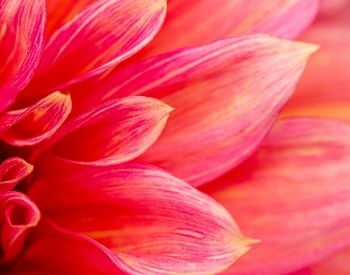
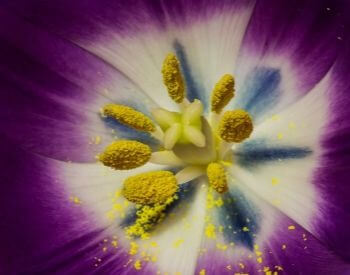
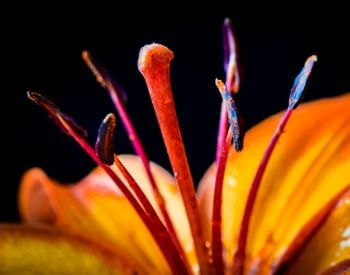
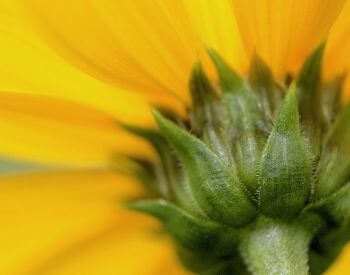
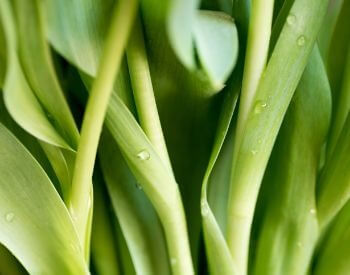
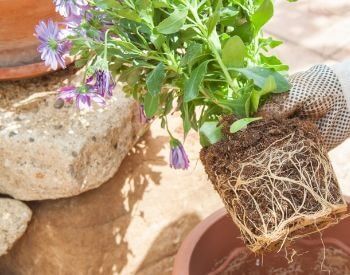
Find More Facts About Flower Parts
- Parts of a Flower – Learn about the different parts of a flower on the University of Illinois website.
- A Guide to Flower Parts – A beautifully illustrated guide on the parts of a flower by the American Museum of Natural History.
- Flower Parts Video – An excellent video by Peekaboo Kidz explaining the parts of a flower.
- Floral Parts – Wikipedia – Discover the different parts of a flower on the Wikipedia website.
